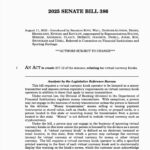AWS Outage Exposes Crypto Decentralization Weakness
Background: Outage Impacts Multiple Crypto Platforms
An Amazon Web Services (AWS) outage lasting approximately 15 hours disrupted access to major crypto and fintech platforms, including Coinbase, Robinhood, MetaMask, and Venmo. The incident raised significant concerns about crypto decentralization weakness, as millions of users could not interact with wallets, exchanges, or decentralized applications (DApps), even though underlying blockchains continued to generate blocks without interruption. Reporting via Cointelegraph.
The failure highlighted the industry’s reliance on centralized cloud infrastructure for critical interfaces and API services. Despite the distributed nature of blockchains themselves, access points remain vulnerable to disruptions in cloud hosting environments.
Industry Voices on Decentralization Weakness
Jamie Elkaleh, chief marketing officer at Bitget Wallet, commented that “decentralization has succeeded at the ledger layer but not yet at the infrastructure layer.” He emphasized the need to diversify beyond major cloud providers, known as hyperscalers, into more community-driven and distributed networks. Elkaleh explained, “Full decentralization isn’t yet feasible at scale” due to practical reliance on providers like AWS, Google Cloud, or Azure for compliance and uptime.
Elkaleh advocated for a “credible multi-home” infrastructure—a hybrid system in which workloads are distributed between centralized clouds and decentralized networks to minimize single points of failure. Risks arise when “if one region or provider goes down, hundreds of apps are affected,” Elkaleh noted.
Anthurine Xiang, co-founder of EthStorage and QuarkChain, observed that the AWS outage proved many Web3 services remain heavily dependent on centralized infrastructure. She stated, “It’s like the house is fine, but the door is jammed,” explaining that while blockchain data remained secure, access was blocked when interfaces went offline.
The event impacted user balances and trading capabilities; for example, MetaMask users saw zero balances because the service fetching data from the chain went down, not due to blockchain failure. Coinbase’s app and Base network suffered crashes, preventing account logins and blocking transactions, while Robinhood traders experienced API disruptions.
Market Reaction and Calls for Infrastructure Reform
Jawad Ashraf, CEO of Vanar Blockchain, criticized the over-concentration of crypto infrastructure, stating that “roughly 70% of Ethereum nodes are hosted by AWS, Google, or Microsoft. We’re just paying three different landlords instead of one.” He suggested that while building fully decentralized systems is possible, the associated complexity and slower development mean “most teams won’t do it anytime soon.”
Elkaleh and others suggested that this AWS outage should serve as a turning point, accelerating the adoption of decentralized cloud, storage, and compute protocols such as Akash, Filecoin, and Arweave. “Every major outage is a wake-up call,” Elkaleh said, stressing that “the future of Web3 won’t be defined by how decentralized the tokens are, but by how distributed the infrastructure truly becomes.”
What’s Next: Toward More Robust Decentralization?
Industry leaders argue that to prevent similar disruptions, Web3 projects must pursue hybrid infrastructure architectures—combining traditional cloud computing with decentralized networks powered by community-run nodes. This transition aims to reduce concentration risk, enhance resilience, and align operational structures with the core decentralization ethos of the crypto industry.
For more on resilient crypto infrastructure and decentralization, visit our cryptocurrency section.



















